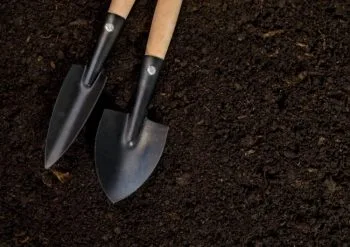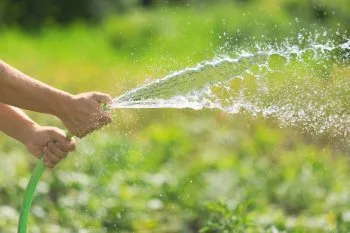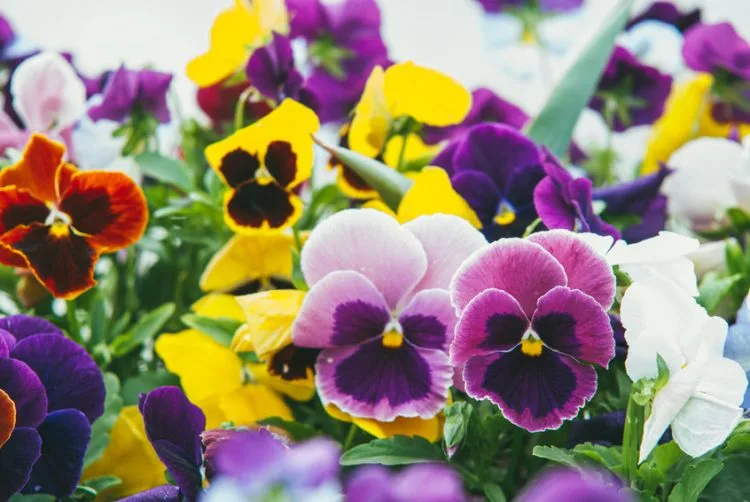Thinking about planting some fall annuals? Pansies and dianthuses both come in gorgeous colors.
There’s a lot of things to consider before you start planting. How often you’ll water your new plants is one of them.
Call Evergreen Lawn and Landscape today for help with seasonal planting.
Newly planted flowers and shrubs will initially need to be watered both consistently and deeply. When this happens, the root systems will be able to adequately establish themselves.
It is necessary to have an efficient use of water in the garden and landscape.
It’s easy to say, “water well,” but it can be confusing to actually determine what the “right” amount of water is. Continue reading for detailed information on how often to water new landscape plants.
Test soil drainage

It’s recommended to test and prep the soil prior to planting to determine how well it drains.
Here’s what to do:
Dig a hole- Think about the size of the plant that you’ll be planting. If you’re not sure, do about 6-8 inches wide and 2-6 inches deep.
- Fill the hole halfway with water.
- Set a timer.
- Note how long it takes water to drain out of the hole.
- If the water drains in 15-30 minutes, your soil is draining well.
- If the water drains in less than 15 minutes, that is too fast and you will need to add some soil amendments in.
- If the water takes over 30 minutes to drain, modify the beds in a way that will increase aeration and drainage.
RELATED TIP: How Fast do Emerald Green Arborvitae Grow?
First 4 weeks

In Texas because we experience such high temperatures, new plants usually need to be watered every day. If temperatures are below 90 degrees Fahrenheit, watering every other day will be sufficient.
On days that it rains, you will not need to water. Too much water is as detrimental to plants as lack of water.
You should be watering for about 15-20 minutes at a slow, steady pace in order for the water to fully reach the root zone.
That might seem like a long time, but here in North Texas, most homeowners have clay soil. Clay soils drain more slowly than sandy, coarse soils.
Lawn maintenance, like mowing and irrigation is just as crucial for your lawn as watering and trimming is for your plants and flowers.
After the first 4 weeks

You will need to consistently monitor the soil to determine when your plants need water. The soil around the base of the plants should always be moist.
Generally speaking, you can begin watering 2-3 times per week instead of every day. Your plants will need more or less water depending on the temperatures.
When it is hot, water more frequently. When temperatures begin to get cooler, water less.
For more watering tips, check out our blog post titled, “Lawn and Garden Watering Guidelines.”
Knuckle test
Do a knuckle or finger test to check the moisture level of your soil.
- Put your finger in the soil up to the 2nd knuckle.
- If your finger goes in easily, the soil is moist and well-watered.
- If you feel resistance, soil is dry and compacted and will require water.
- When the soil is moist, some soil will stick to your fingers.
- A clean finger means your plant needs water.
- Cover the hole when finished.
Bonus- Perform your finger tests in different places and you will also be aerating the soil!
Signs of a stressed plant
- Wilted or drooping leaves
- Curled leaves
- Yellow leaves
- Gray/blue leaves
- Excessive amount of leaves and flowers falling off
- Sunburnt or bleached leaves
The signs are the same for over-watering as they are for under-watering. You can determine which is the case for your plants by examining the soil.
Wrapping up

The most important thing to remember is that the soil should always be moist. Feel the soil to get a better idea of whether or not your plant needs water.
Start off with low-maintenance or native plants. These plants will do best with the climate and weather conditions of your area.
Begin with just a few plants until you get the hang of it. Good luck and happy planting!



Comments (0)
Thanks for your comment!
Thanks for your feedback! Your comments have been successfully submitted! Please note, all comments require admin approval prior to display.
Error submitting comment!
There is a problem with your comment, please see below and try again.